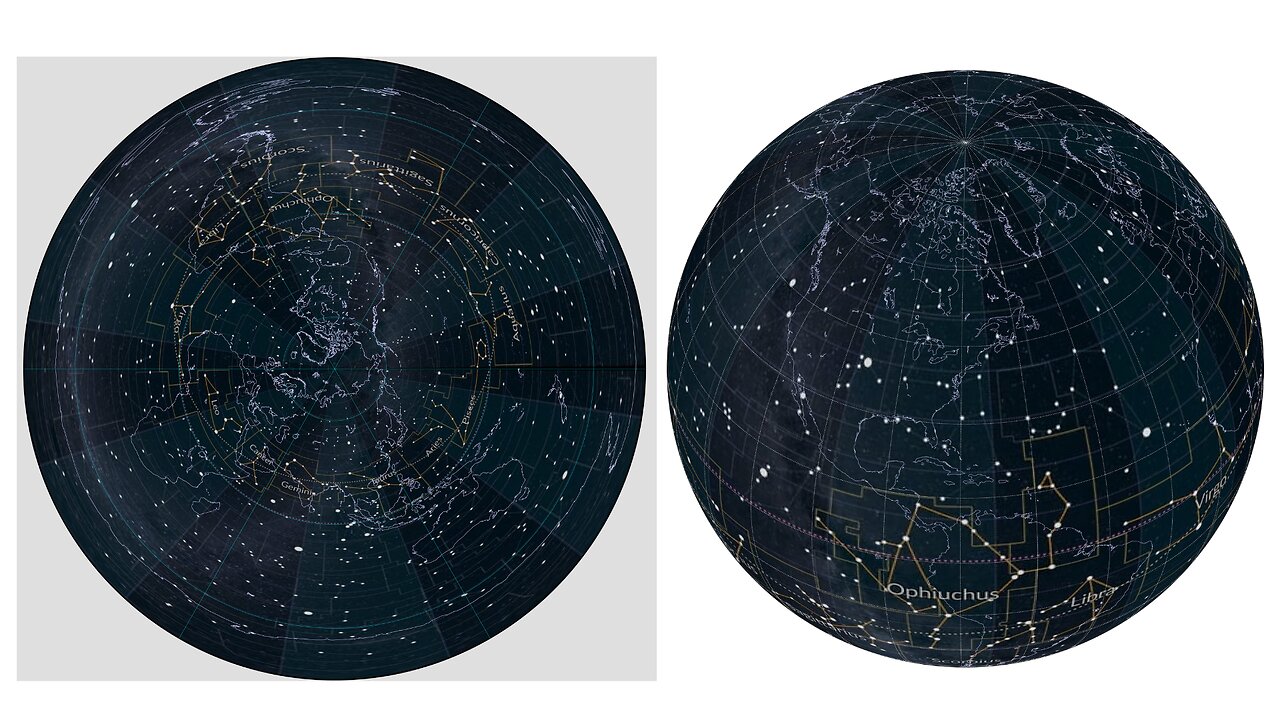Premium Only Content

What is the local celestial sphere?
What is the local celestial sphere?
(going to need this for tomorrow)
The local celestial sphere is a conceptual model used in astronomy to describe the sky as seen from a specific location on the Earth's surface. It is a sphere of an arbitrary large radius, centered on the observer, onto which all celestial objects (stars, planets, the Moon, and the Sun) are projected. This model helps in understanding the apparent motions of celestial objects as observed from Earth.
Key Concepts
Celestial Equator: An imaginary line on the celestial sphere, directly above the Earth's equator.
Divides the celestial sphere into the northern and southern celestial hemispheres.
Celestial Poles: The points on the celestial sphere where the Earth's rotational axis, if extended infinitely, intersects the sphere.
North Celestial Pole (near Polaris) and South Celestial Pole.
Zenith: The point directly overhead an observer on the celestial sphere.
Unique to each observer's location.
Nadir: The point directly opposite the zenith, beneath the observer.
Horizon: The boundary line dividing the visible sky from the part of the sky obscured by the Earth.
At a specific location, it's a great circle 90 degrees from the zenith.
Altitude and Azimuth: Altitude: The angle between an object in the sky and the observer's local horizon.
Azimuth: The angle between the north direction and the projection of the object on the horizon, measured clockwise from the north.
Ecliptic: The apparent path of the Sun on the celestial sphere over the course of a year.
Tilted relative to the celestial equator by approximately 23.5 degrees due to the tilt of the Earth's axis.
Uses of the Local Celestial Sphere
Celestial Navigation: Measuring the angles between celestial objects and the horizon to determine latitude and longitude.
Explains the apparent daily motion of stars (diurnal motion) due to the Earth's rotation.
Helps in understanding the annual movement of the Sun along the ecliptic.
How the Local Celestial Sphere is Visualized
Imagine standing on a flat, open plain with a clear view of the sky. The celestial sphere would appear as a vast, dome-like structure overhead. Here's how you can visualize it:
Celestial Equator: As you stand on the equator, the celestial equator passes directly overhead. If you move towards the poles, the celestial equator tilts towards the horizon.
Celestial Poles: As you move northward, the North Celestial Pole rises higher in the sky. At the North Pole, the North Celestial Pole is directly overhead, and the celestial equator is at the horizon.
Stars: Stars are projected onto this sphere. As the Earth rotates, they appear to move along circular paths parallel to the celestial equator.
Easy concept, but it functions on a plane earth the same way it does on an imagined globe. In fact, this is what the globe is created from, to ensure the measurements are valid and would not be noticeable....
-
 1:25:32
1:25:32
Anti-Disinfo League
2 months agoHow the Jezzies 'Rediscovered' the Celestial Sphere
318 -
 LIVE
LIVE
Lofi Girl
3 years agolofi hip hop radio 📚 - beats to relax/study to
343 watching -
 21:37
21:37
Forrest Galante
1 day ago6 Deadly Sea Monsters That Actually Exist
154K10 -
 23:24
23:24
Stephen Gardner
14 hours agoYou WON'T Believe What Happened To Lindsey Graham
77.9K61 -
 8:05:17
8:05:17
SpartakusLIVE
12 hours agoSolos on ARC: UNBANNED
264K12 -
 30:29
30:29
Robbi On The Record
12 hours ago $12.56 earnedWhales Are Selling. Banks Are Nervous. Bitcoin analysis ft Simply Bitcoin Tv
29.1K9 -
 2:28:12
2:28:12
vivafrei
20 hours agoEp. 291: More Epstein Documents! Stacey Plaskett SCANDAL! Butler Cover-Up, Tucker Smea & MORE!
222K288 -
 6:06:22
6:06:22
xLuigi34x
12 hours ago100 Follower Special! Going to 100% The DKC Trilogy on stream!
57.5K9 -
 50:27
50:27
Sarah Westall
10 hours agoMusk Helps Expose the Most Consequential Political Blackmail Operation in Modern British History
49.3K24 -
 4:52:47
4:52:47
Due Dissidence
18 hours agoTrump GOES NUCLEAR on MTG, Tucker Exposes Butler COVERUP, Shmuley SUED For HILARIOUS Reason
57.3K32